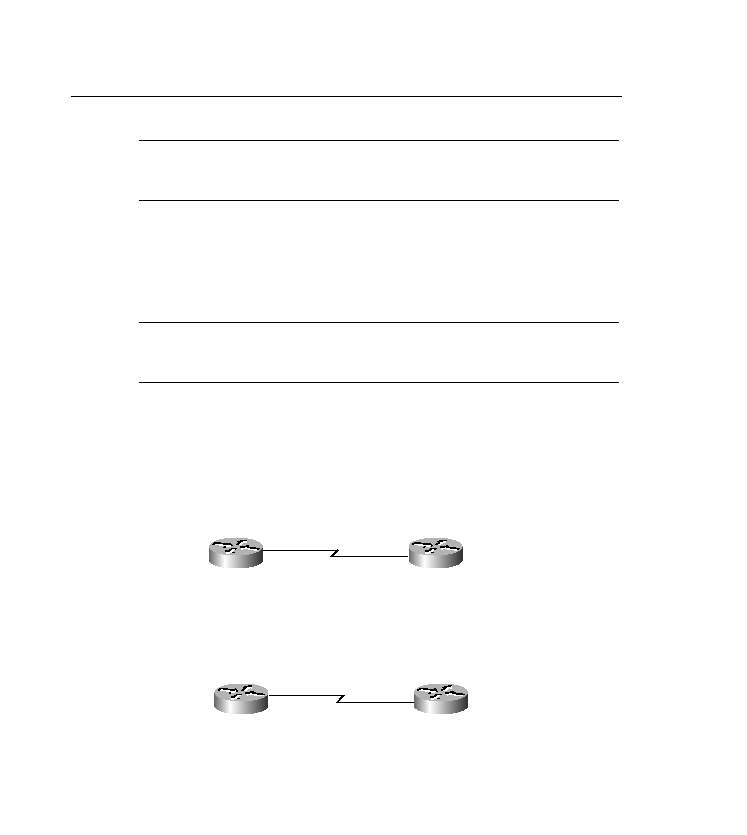
problems with the unnumbered feature. You don't have a way to ping or monitor the interface
through SNMP because the interface basically uses another interface's IP address.
Ethernet, for your unnumbered configuration, if the Ethernet interface goes down, you lose the
whole connection between the routers. The loopback interface will always stay up (even when
your Ethernet is down), except when your router is powered off.
into summarization schemes and so on. Then, you can use them for peer connections,
unnumbered interfaces, router IDs, and so on.
in Figure 11-8, Router A calls Router B with ISDN. Address 1.1.1.1 on Router A calls Router
B at address 1.1.1.2. This works fine because they are on the same subnet.
addresses are on different subnets. Data will not be able to be exchanged between routers.